
MENUMENU
TALK TO AN EXPERT
Special Hours: 7AM – 6PM PST
TALK TO AN EXPERT
Special Hours: 7AM – 6PM PST
Disclaimer: We conducted this study with a real world scenario in mind.
This test was meant to demonstrate the functionality of a real world scenario of a system with AGM versus lithium batteries. We do acknowledge that some customers are aware of temperature and load effects on the AGM battery cutoffs, but a vast majority do not know or do not update their programming to reflect this based on their given circumstances. We have found that a majority of our customers that call in have not adjusted their system parameters and prefer this way.
Our team performed our testing to model system parameters similar to actual customer systems and that would fully preserve the life cycles of an AGM battery to get the most usage out of it.
We put our LiFePO4 batteries head to head with AGM lead acid batteries to compare their output in increasingly cold temperatures. This study was conducted at various temperatures and shows that our LiFePO4 batteries outperform lead acid AGMs batteries at every temperature.
In this study, at room temperature at 80A, our LiFePO4 batteries delivered 191Ah out of 200Ah, where AGM delivered 11.3Ah out of 210Ah available. That means your LiFePO4 battery has 95% more deliverable power at an 80A draw than an AGM battery. Keep reading to find out what happens below freezing and exactly why #LeadisDead.
The most asked questions about our batteries deal with cold temperature charging.
“Do they still work in cold temperatures?”
“Can I charge my batteries in colder climates?”
Every one of our batteries are built with an internal BMS (battery management system) programmed to preserve the life and health of the battery. If the battery is in a cooler environment, the BMS will trigger and keep the battery from taking a charge as long as the temperature is below 32° F. This is one of the many ways our BMS helps preserve your battery. To learn more, check out our FAQ page.

Many myths surround LiFePO4 batteries, especially when it comes to their operation in cold temperatures. One of our driving missions at Battle Born Batteries is to help educate people on our batteries inside and out. Not only is LiFePO4 chemistry much safer than a standard AGM lead acid battery, but they are much more efficient and deliver the power they promise.
Our team of engineers helped design and run this experiment at our facility to highlight just how well our LiFePO4 batteries work when compared to the standard lead acid AGM battery in colder temperatures.
Note, we presented our results in amp hours as this is the most widely used way to represent battery power.
Check out this video we put together that summarizes this experiment.

Lithium iron phosphate batteries are commonly referred to as LiFePO4 batteries. For consistency, lithium iron phosphate batteries by Battle Born Batteries will be referred to as LiFePO4 batteries. And the Group 31 lead acid AGM batteries will be referred to as AGM batteries.
It is true that LiFePO4 batteries cannot be charged in the cold, but this implies that our batteries do not perform as well as lead acid in the cold. The purpose of this study is to show that all batteries experience a reduction in power at cold temperatures, but that cold temperatures impact AGM batteries much more than they impact LiFePO4 batteries.
At 25° F, a Battle Born battery will no longer accept a charge. This is to preserve the cells in the battery, and the internal BMS will allow a recharge when the temperature is above 32° F. Every single battery that we assemble has this intelligent internal BMS.
Lead acid AGM batteries do not have an internal BMS, meaning they may operate at colder temperatures for a bit, but you risk damaging the entire battery and losing power for good. Damaging a lead acid battery can be very dangerous for you and your rig and should be avoided.
Our mission is to educate people on the benefits of lithium batteries and how they can add value to your experience in a boat, an RV or off grid solar system. That’s why we put these batteries head-to-head in a cold temperature charging battle that will send shock waves through the industry.
Before we get into the study, we need to talk about the Peukert Effect.
The Peukert Effect is a mathematical equation that says: if you have a high current coming out of the battery, you get less energy coming out of the battery.
This study showcases how the cold temperature amplifies the Peukert Effect. For example: the energy that you get for a 20-hour discharge rate out of a lead acid battery is significantly lower than the energy you would get out of a 5-hour discharge rate from the same lead acid battery. Simply put: as you increase the discharge rate, you decrease the capacity.
Peukert’s Law is only accurate if the battery is discharged at a constant rate and constant temperature.
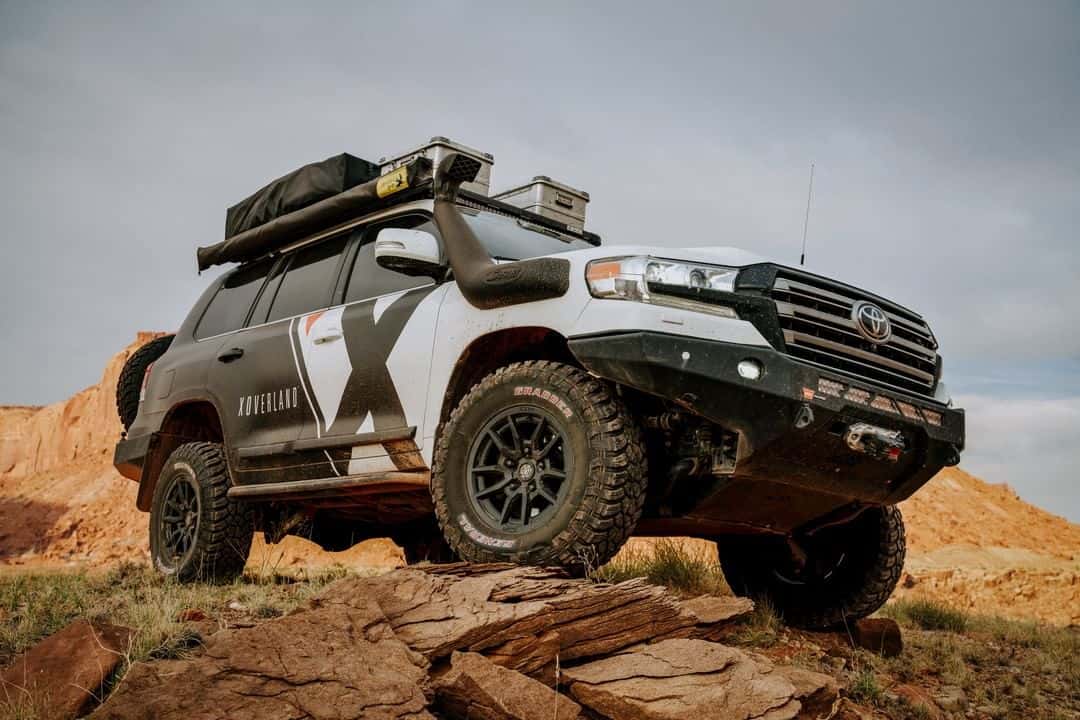
This law does not consider the temperature and age of the battery. This effect is amplified at colder temperatures or with older batteries.
The point of our study was to show the Peukert Effect in action. We used brand new batteries, so our focus for this experiment was purely on temperature.
We tested the performance difference between AGM batteries and LiFePO4 batteries at four different temperature ranges. Even at room temperature (67-72 degrees) our batteries were able to outperform AGM batteries. We started the testing at room temperature, and went all the way down to 13-18° F. Not only did we test the batteries in varying cold temperatures, but also under different loads of charge and discharge.
For this study, we used two newly purchased Group 31 12V AGM batteries, 105Ah each, and two new Battle Born 100Ah 12V LiFePO4 batteries, assembled in our factory here in Sparks, Nevada.
The LiFePO4 batteries and the AGM batteries were tested under a constant current discharge rate.
The batteries were discharged at the industry recommended 50% depth of discharge. The LiFePO4 batteries were discharged down to 11.8V and the AGM lead acid batteries were discharged down to 12.2V.
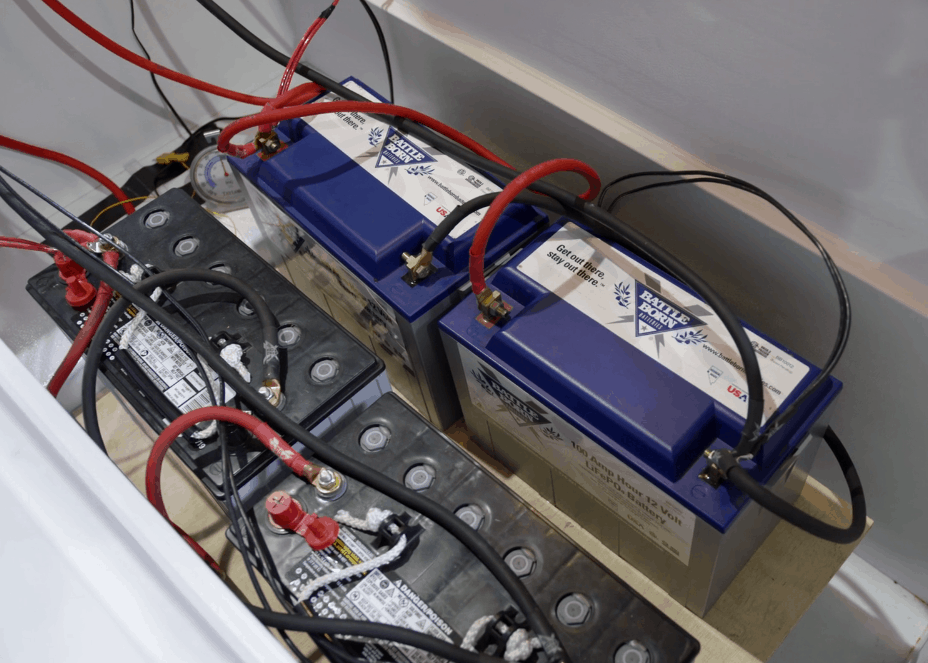
The batteries were tested at four different temperature ranges:
The batteries were tested at four different load ranges within each temperature range: 30A, 50A, and 80A.
We did NOT do the testing of a 10A load as it pulls such a minimal draw, meaning the results were more of baseline or control.
During each test, both sets of voltage and current were continuously recorded. If you’re curious about what equipment we used, check out our white paper.
For each series of tests, the batteries were fully charged at room temperature and were then cooled to the target temperature range. Once the batteries reached the target range, they were discharged and monitored. The chest freezer was outfitted with an electrical relay temperature controller to bypass the chest freezer’s own thermal control.
After this second discharge test, the battery banks were fully charged at room temperature before a new round of tests were conducted.
The results show that at colder temperatures all batteries exhibit some diminished capacity, but that the diminished capacity is much greater in an AGM battery versus a LiFePO4 battery, which only diminished slightly in capacity.
The results of this study demonstrate that even though both AGM and LiFePO4 batteries are affected by low temperature discharges, the LiFePO4 batteries can perform significantly better than the AGM batteries.
Though the battery banks were of comparable Ah size, the deliverable power of the lead acid at the high discharge rates and lower temperatures rendered this battery bank nearly useless.
The LiFePO4 batteries outperformed the AGM batteries in every test we performed. Note, we presented our results in amp hours as this is the most widely used way to represent battery power. See our results below.
While discharging a battery at room temperature on a 30 amp draw is not a huge load, it was important to set a barometer for the test.
30A
Even though our batteries are rated at 100Ah, sometimes you will get a slightly higher Ah (103Ah for example) out of the battery. Due to the quality control we do, we never send a battery out lower than 100 Ah. In short, 100Ah is the minimum amount of power you’ll get from our BB10012 batteries.
Even at room temperature, lead acid batteries can’t deliver even one third of their promised capacity. This is a regular lead acid battery at regular temperature. LiFePO4 batteries output versus AGM batteries is much higher, even at the baseline temperature!
But check out what happens when we test at 80 amps:
80A
The AGM lead acid batteries delivered 11.25 amp hours out of 210 promised amp hours. That means about 5% of the battery capacity is usable.
The LiFePO4 battery delivered as much as 17 times more energy than the AGM lead acid batteries. Even with the closest results, LiFePO4 batteries still delivered three times more energy than AGM batteries at this temperature.
The batteries were brought up to a 100% charge to even the playing field and tested again. This time we tested the batteries at 33-37° F, almost freezing but not quite.
Discharged at the same rates, the LiFePO4 batteries still outperformed the AGM batteries at every level.
30A
At 30A, the LiFePO4 Battle Born Batteries provided 4.8 times more energy than the AGM batteries.
80A
At 80A, the LiFePO4 batteries provided 17 times more energy. Think of all of the things you could power with that much energy!
LiFePO4 batteries are outputting almost 100% of their promised Ah at this cooler temperature. Versus the AGM batteries, which lose yet another third of their energy at this temperature.
The next range of temperatures is, truthfully, the most controversial range when it comes to cold temperature and lithium batteries.
This is the most heavily discussed range because at 25° F the Battle Born battery will no longer take a charge due to the BMS. And it won’t recharge the battery until it comes above 32° F. This is to protect the battery in these cooler temperatures. Naturally, most of our customers are curious and ask questions about this temperature range specifically.
30A
At 30A, the AGM batteries deliver some power at this cooler temperature, but it is only a fraction of their promised capacity. Compare this to our LiFePO4 batteries, which deliver four more times the power of an AGM battery at this rate and temperature (not to mention at a fraction of the weight as well).
80A
During the 80A discharge test, the AGM battery bank delivered less than 1 amp hour of energy before the low–voltage cutoff was reached. By contrast, the LiFePO4 batteries were able to still deliver 175Ah, more than an AGM battery delivers at room temperature.
The AGM batteries were only able to deliver 0.38 amp hours in this temperature range! That’s less than one amp hour. The AGM battery is underperforming significantly at this temperature.
What happens to the batteries when we drop the temperature even lower?
The final test was performed in the 13-18°F range.
At this temperature range, the LiFePO4 battery bank could not be recharged as it is below the allowable charge temperature of 25°F as set by the internal BMS. Meaning no further charge data was collected for the LiFePO4 bank, while the test continued for the AGM battery bank.
At these cold temperatures, most RVs and boats will be experiencing other mechanical or electrical problems. Unless your rig is specifically built to operate in this kind of cold climate, we wouldn’t recommend it.
30A
The AGM batteries delivered a fraction of their promised capacity again, which is even lower at this colder temperature. The results of the next 80A test are truly jaw-dropping.
80A
The AGM batteries were still unable to produce even one amp hour of power at 80A. It only delivered 0.65 amp hours, which won’t power much. Granted, it performed slightly better than at the 26-30 range, however, it’s still an underwhelming amount! The AGM batteries deliver small amounts of power at this cold temperature.
Because of the freezing temps, the AGM batteries may show varying and unreliable voltage readouts. Running any batteries at this temp is not recommended.
The Battle Born LiFePO4 batteries on an 80 amp draw were able to deliver 154.45 amp hours. Again, the LiFePO4 batteries deliver more power than the AGM batteries ever do, even at this freezing temperature.
Just because LiFePO4 batteries cannot be charged in the cold does not mean that you can’t use them in the cold!
That’s a lot of data to process. Let’s break it down.
We should note that the Peukert Effect is visible in this study, especially for lead acid AGM batteries. As you increase the discharge rate, you decrease the capacity. We have seen this demonstrated directly in our study. The more we increased the discharge rate (along with the temperature changes), the less power the batteries could deliver.
More importantly, look what happens to the AGM lead acid batteries at the coldest temperatures. At 13-18° F, the capacity diminishes from 31.94 amp hours to virtually zero.

The increased resistance at colder temperature is extreme for lead acid batteries.
The point of this study is to demonstrate that even though our lithium iron phosphate batteries have a low temperature cutoff, you cannot extract or put in current into a similarly sized lead acid or AGM system at cold temperatures.
We at Battle Born Batteries are aware that many of our customers want to be able to charge and discharge their batteries readily at very cold temperatures. We’ve come up with multiple solutions.
For starters, we have our own external heating solution at Battle Born Batteries. You can purchase our external heating wrap and safely heat and keep your battery above freezing. This will allow your battery to charge and discharge at the appropriate capacities. It is important to note, do not use a lead acid heating blanket or a heating pad with LiFePO4, as you may damage the battery.
The Battle Born team has been developing an option for internal hearing for our next generation of batteries. We’ve developed an internally generated heating solution which helps keep the battery just above freezing. The power for this heat comes either from your charger or from the battery itself, ensuring that you can always keep the battery within the appropriate temperature levels for operation. These batteries are coming soon so stay tuned! Follow us on our Instagram and Facebook for special announcements.
There are many heating solutions for our LiFePO4 batteries. If you are curious about which ones might work for you and your system, give us a call at (855) 292-2831 or email us at [email protected].
The myth that AGM batteries perform better than Battle Born LiFePO4 Batteries at cold temperatures is just that – a myth. The data shows that LiFePO4 batteries perform exceptionally at high power and in cold temperatures, especially when compared to AGM batteries.
The LiFePO4 batteries outperformed the AGM batteries in every test performed. Regardless of temperature or power draw, the Battle Born LiFePO4 batteries delivered repeatedly.
Our cold temperature shutoff does not mean that you cannot use your battery in cold temperatures!
The internal BMS is meant to protect your battery – something that AGM batteries have no way of doing. Not allowing a charge at freezing temperatures preserves the LiFePO4 battery so you are still able to use it!
Don’t worry – you’ll still get more energy out of a Battle Born Battery below freezing than you will out of an AGM battery at any temperature. It’s important to remember that we performed our testing to model system parameters similar to actual customer systems and that would fully preserve the life cycles of an AGM battery to get the most usage out of it.
If you would like to read the published white paper, please click here.
Shop Best Sellers
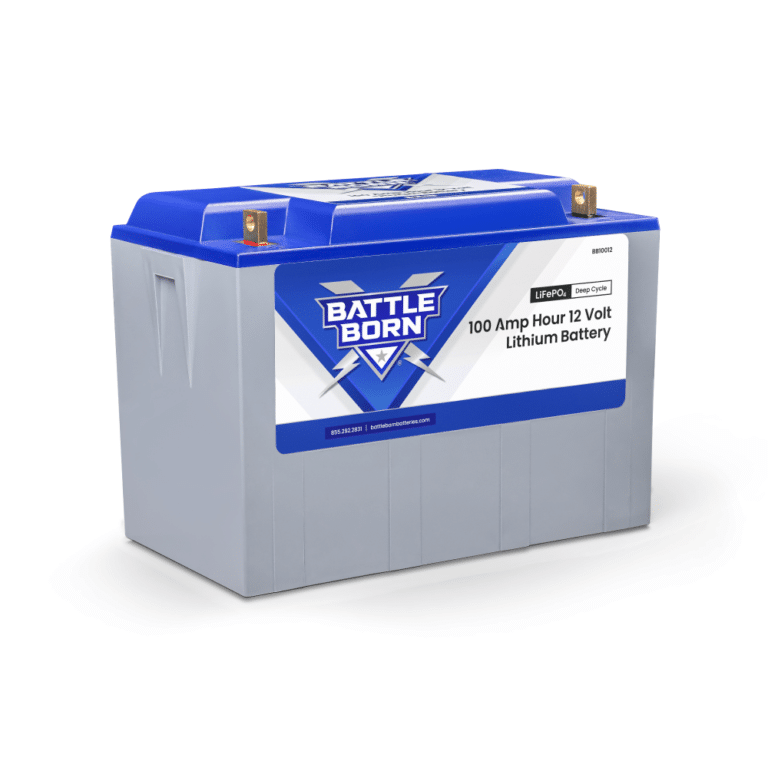
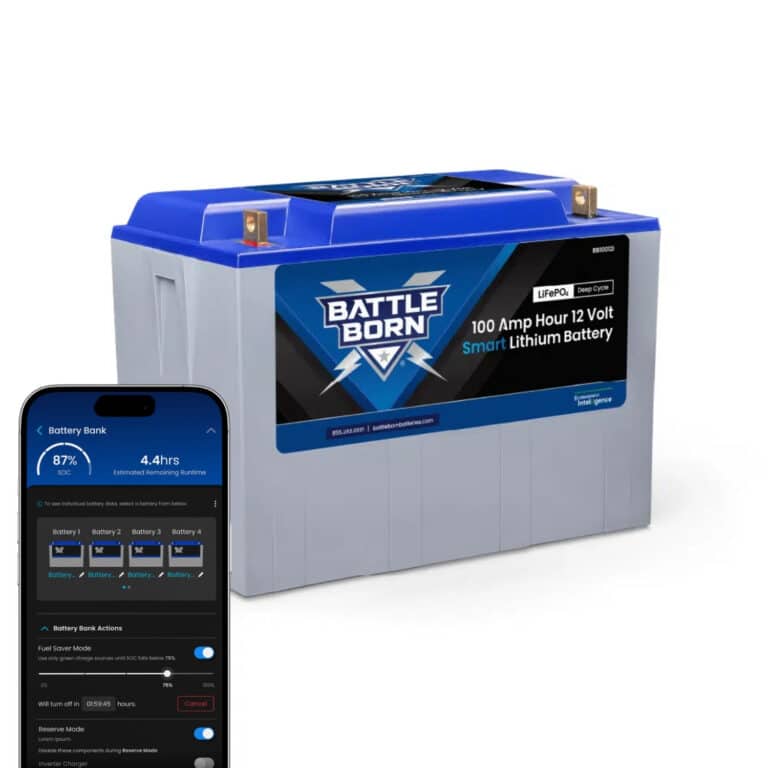
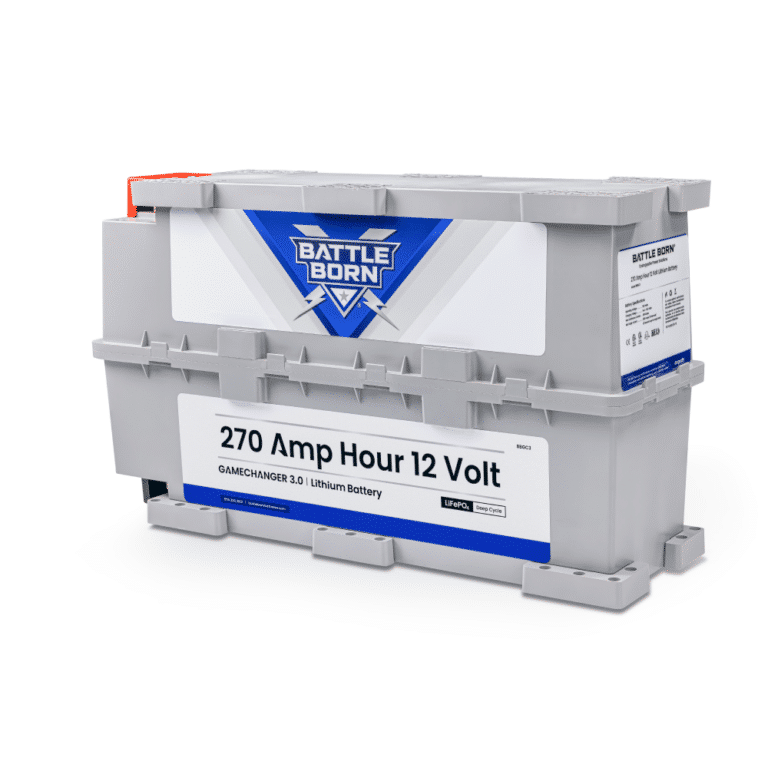
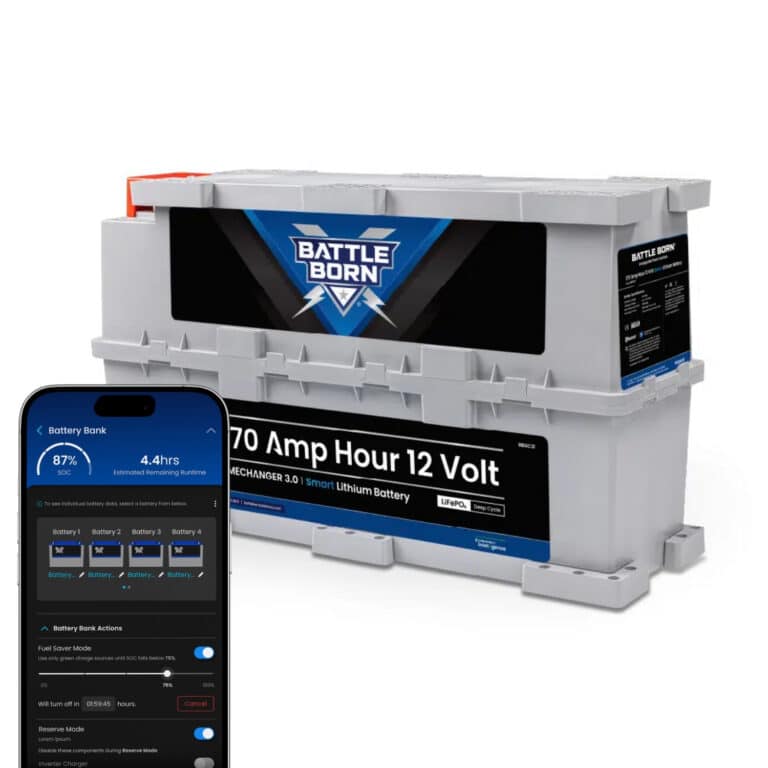
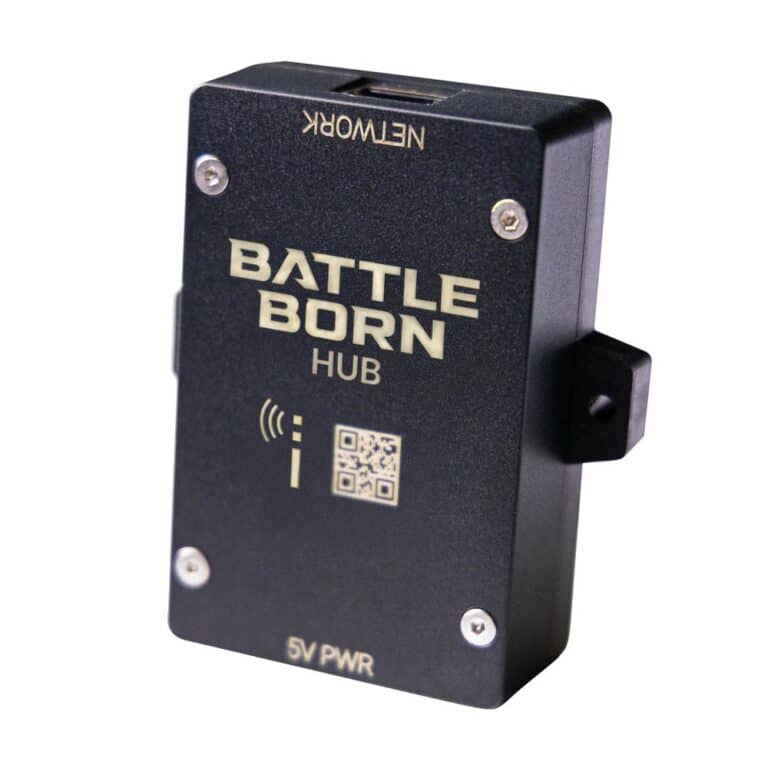
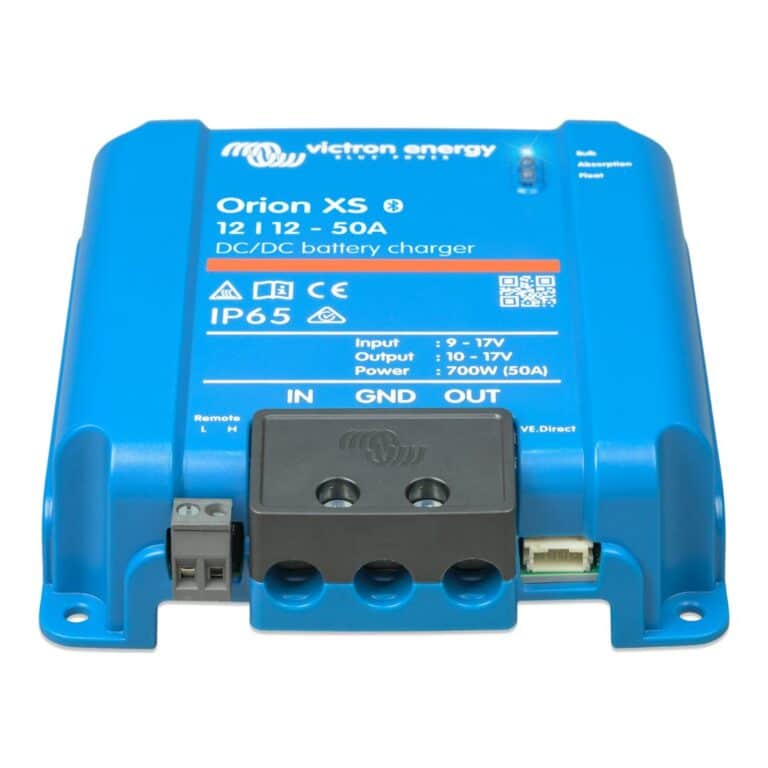
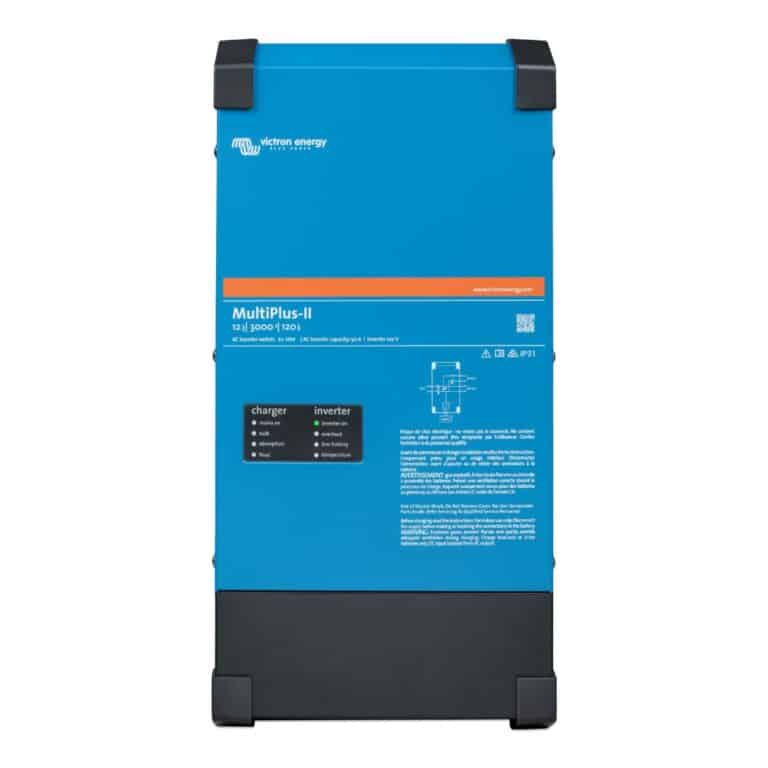

Ask a technical specialist now at 855.292.2831
Stay in the Know
25 thoughts on “Lead is Dead White Paper: Cold Charging Study”
Jamie here from Enigmatic Nomadics on YouTube. I’m two yeas in with my Battleborn battery set up and can’t imagine going with anything else. Especially in the summer when I take them way down while running the air conditioner in my converted skoolie. The recharge time is amazing with a solid day of sun, I’m always back in business!
John & Brenda from GeoAstroRV. We love getting out there and staying out there at some of the darkest skies in North America. Battle Born Batteries are at the core of our off-grid lifestyle. Thanks for the great information. This will help combat some of the misinformation out there!
Shawn from The Himmelbergers on Youtube , I currently have 21kw of AGM batteries (1800ah @12v / 900ah@24v). I’d love to go lithium some day, they are the future. The AGM side seems off, even at room temperature. I run telecom cells (10) labeled for 8 hr rates, so 185 @ 8hrs = 23 amps or so. Yet in your test this 210 ah (20 hr rate, I know) is only delivering that for a little over two hours? Was this an AGM starting battery? It looks like this one SLI31DTMAGMDC.
The typical Peukert number for AGM is between 1.05 and 1.15 (according to Wikipedia) . ( Working from this calculator https://www.easycalculation.com/physics/classical-physics/battery-capacity-discharge-time.php ) To replicate the results of the room temperature graph you need a Peukert number of 1.353! As you say, these were new batteries, so no age degradation should be in play here. At worse case scenario with 1.15 we get actual battery capacity of 126 ah, that is 1/2 of what we’d expect based on a century of experience.
Again, I’m not saying AGM is better, lithium is better in every way, but be fair an accurate when you publish numbers like this. Something just doesn’t add up. Actually, the more I look at the data, it looks like only 1 of the AGM batteries was connected, or discharging. The number work out perfect then. 105ah (20hr rate) with a 30a rate of discharge and 1.15 Peukert Number will give you 63 ah of capacity.
Our data is derived from discharging the battery bank to the industry standard 12.2V for every test, which is the manufacturer’s recommended 50% discharge voltage cutoff. We did, in fact, charge and discharge two deep cycle AGM batteries for this test and not starting batteries as you have mentioned. Our study looked at the following discharge rates to be on par with realistic application draws: 7 hr rate, 4hr rate, and a ~1.5 hr rate.
If we adjusted the voltage cutoff depending on the load and correct temperature we would have reached similar Peukert numbers to what you mentioned. The reason we did not adjust this cutoff was because in a typical setting, people aren’t continuously programming the logic in their inverter depending on the loads they apply and ambient temperature at the time of use. The point of our study was to place the batteries in real world and system conditions.
If this cutoff number were to be adjusted, it should have been approximately a 12.11V cutoff at a 30A discharge, which would have resulted in a closer Peukert number with that data than the one we obtained.
Thank you for the explanation and insight into testing methods.
I was initially thrown off I think by the graphs saying “capacity “ not “usable capacity”.
I think there is some validity to the argument that even lithium battery technology has full discharge capability and recommend cycle DOD. You’ll get more cycles from a LiFeO4 battery if you cycle it between 20% and 80% DOD than 100%. Sure you can do it, but there are trade offs. Same with AGM, albeit more dramatic.
Just my $.02
Thanks , you’ve got a great product.
A cutoff voltage of 12.2V is too high, so you’re artificially making the lead acids look worse than they do. The effects of cold on AGM’s is well known, please see this paper by Sandia National Laboratories – https://prod-ng.sandia.gov/techlib-noauth/access-control.cgi/2004/043149.pdf
They suggest a low cutoff of 9.9v (1.65V per cell at .4C ) for capacity testing.
12.2V as a measure of SoC for a lead acid battery is a bit high, but it’s only accurate when the battery is at rest and has been for a few minutes at least.
Using that as a cutoff voltage when the battery is under .4C load will of course give you a result where the battery doesn’t appear to have significant capacity, but that doesn’t mean the battery is dead. The Sandia report suggests that capacity at -20C (-4F ) is roughly 65%, which is WAY more than you found in your white paper and a much colder temperature than you tested. 80A is a pretty unrealistic draw anyway if you have any intentions of making it through a cold night. 10A is probably more realistic, you’re only running a few lights, a furnace fan and charging a device or two.
Next, your white paper completely seems to forget that one big difference between AGM’s and BB at sub freezing temperatures – you can charge the AGM.
So in a more extended stay, while the BB becomes a single-use battery until the weather warms up, the AGM’s somewhat reduced capacity remains more or less usable like normal. I’ve happily dry camped in sub-freezing temperatures for days with lead acid batteries that you say have nearly zero capacity without issue.
Hi Eric,
Thank you for providing further data on AGM batteries performance in cold temperatures. This test was intended to reflect systems in real world scenarios, which is why this was not adjusted for the various loads.
The 9.9V cut off would be very low and would reduce the life cycles of the battery. Our aim was not to push these batteries to the edge of their capabilities, but to showcase how they would function in most systems we encounter.
We do acknowledge that some customers are aware of temperature and load effects on the AGM battery cutoffs, but a vast majority do not know or do not update their programming to reflect this based on their given circumstances.
You are correct that the battery would not be dead in this scenario, but if an average user (that does not adjust their programming) is using this system, they would not be able to extract this remaining power.
The 80A draw was chosen to reflect when a customer is running high draw items, like making dinner in an instant pot while running lights and fans and potentially charging other items. Our goal with this study was to put ourselves in our customer’s potential scenarios to see how the batteries fared. We modeled this after people really living on the road looking to get rid of their battery anxiety.
You make an excellent point that you can in fact charge the AGM at low temperatures, but there is very little charge that the AGMs can accept at this temperature range. Luckily, in most cases, even when our battery banks are in these cold temperatures, their internal temperature will not be low enough to reach this cut off. Our BMS low temperature cutoff is put in place to protect your battery and its life cycles. In addition to this, you can still discharge our LiFePO4 batteries at this low temperature, which can get most users through a night with no issues.
Our team is appreciative of your feedback and we will continue to acknowledge that this verbiage should be adjusted to better reflect our white paper findings and have made updates to better reflect this.
I’m heading into my third winter with one of your 100AH batteries up here in Tahoe in my Jeep micro camper and it continues to perform perfectly. I’ve got multiple Victron charging sources and the side load varies from a light but constant Engel fridge freezer to a continuous work-all-day inverter and computer combination setup. I couldn’t be happier with the battery and look forward to your new heated models for winter trips to the northern Rockies and Canada where I’ll be wanting to charge in well below zero temperatures. Thanks for the great products and customer service!
I have a 2018 pleasureway lexor with 2 lithium batteries. The warranty people say leave the batteries installed in the coach as they won’t freeze ( it gets to minus 30 here in Winnipeg) for weeks in the winter). As I don’t intend to charge them below freezing, will the very cold temps damage my lithium’s?
Hi David, thanks for reaching out. Our batteries will stop accepting a charge at 25F. They will continue to discharge until -4F. For storage our batteries can withstand up to -10F. If you are leaving the coach in storage for the winter months, we would recommend either bring them inside the coach or a temperature controlled area to protect the batteries. If you store them at low voltage the battery can fall into low voltage disconnect and sustain damage. If you have any other questions, feel free to give us a call at 855-292-2831 or email us at [email protected].
Hey…this is Jim with RV With The Tanners. We are thrilled to be part of this Press Release from Battle Born Batteries, outlining the performance details of their 100Ah 12-volt lithium iron phosphate batteries and how the batteries discharge in varying cold temperatures in comparison to competing AGM lead acid batteries.
Here is the link to our YouTube video, with our summary of this info from Battle Born:
https://youtu.be/BpVz4V_F89U
Of course if you pull 80A from a lead-acid battery bank in cold temperatures it will almost immediately drop to 12.2V under load. As far as I know, that does not represent 50% discharge. All the lead-acid voltage tables I have seen list around 12.0V Open Circuit voltage for 50% discharge, not 12.2V at a 30-80A discharge rate. In the white paper referenced above, they correctly acknowledge that it is possible to lower this cutoff voltage and extract more energy out of the lead acid battery – even at cold temperatures and high currents.
While it is certainly true that the lithium batteries are far superior to lead acid under these conditions, what I object to is Battleborn’s PR people spinning the results shown in the white paper to make misleading statements like “The AGM battery is effectively useless at this temperature.” And “The AGM batteries deliver effectively no power at this cold temperature.”
Those statements are not consistent with the conclusions of the white paper, which only shows that the AGM battery bank could not deliver an appreciable amount of energy before triggering a (highly-arbitrary) prescribed low-voltage disconnect. I expect better from Battleborn.
Hi Dave,
Thanks for your inquiry and feedback. We found that most users will take the recommended 12.2V specs and have them programmed into their inverter chargers and will never adjust or revise this for future load draws. Many RV manufacturers will program inverter chargers this way off the lot, and we pre-program our inverters for the same reason.
This test was intended to reflect real world scenario systems, which is why this was not adjusted for the various loads. This 12.2V cutoff, as you mentioned, is not reflective of what a 50% DOD voltage would be at the varying amperage draws, but is to reflect the standardized programming that we see in the industry.The cutoff voltage can definitely be lowered, but it is concerning that the setting may not be changed back. This lower cutoff can negatively affect the amount of life cycles the AGM battery can output, so we performed our testing with this voltage to model a customer that wanted to maintain parameters that would fully protect the life cycles of their battery and get the most out of it. We do appreciate your feedback and acknowledge that this verbiage should be adjusted to better reflect our white paper findings and have made updates to better reflect this.
Nice article. Paul and Nancy here from “oursomedayisnow” we’d had really nice results with our 2019 Campervan we built. (Sold last week) All electric, 120v induction cooking, 120v hot water heating and 12v DC Fridge. We used it in 22 degrees and your batteries powered up our Victron inverter so we could cook no problem. We don’t like to be that cold typically, But we were confident we could draw from them. The best thing We did was to install the Sterling B2B charger you showed us in Reno. Amazing product! Now that we’ve sold the Van we just met with our Overland Camper builder 5 days ago and we’ll be installing a similar system with your equipment. Alaska gets cold too! We’ll be seeing you guys soon!
Seems like it would have been more useful to use the settled open-circuit voltage of 12.2V rather than the under-load voltage of 12.2V. Or maybe just for the few cycles in the test, take the lead batteries all of the way down. All of this would have been harder to test. However, now that I see that this test methodology didn’t really take the AGM batteries to 50% SOC (or at least to a more reasonable lower-voltage cutoff) it makes the test basically useless as a reference. I would suggest that this was a good first attempt, and that BB should redo the test with better parameters and procedures to produce more useful value.
That said, I love my Battle Borns and they have revolutionized the way I use my RV. Thanks for making a quality product.
As a very happy owner of 4 BBs in my RV, I have touted the advantages of lithium over AGM continually in online groups. But this white paper is poor engineering analysis at best, and downright misleading, at worst. It hurts BB’s credibility. It should be retracted and a more valid comparison of these advantages of BBs (and many others) should be published instead. Here’s a brief summary of the advantages of LiFePO4 chemistry over AGMs that I have identified. I’d love to see these tested, analyzed, quantified, and published. Each would make a great topic for a white paper.
1-Available Power: Available amp hrs are 100% of stated amp hrs for LFP vs 50% AGM.
2-Lighter: Weight is one quarter the weight for the same usable amp hours of capacity (1/2 the weight for twice the available capacity).
3-Longer-lasting: Rated cycles 3000 lithium vs 500 AGM.
4-Costs Less: LFP costs less than a third compared to AGM per available amp hour over rated life.
AGM100: $250 / 50ah / 500c = $0.01 per ahc (amp-hour-cycle)
LFP100: $1000 / 100ah / 3000 = $0.003 per ahc
5-Less Hassle: Since LFP lasts 6 times as long as AGM, you swap out batteries less often, saving installation costs, scheduling, and hassle.
6-Smaller: LFP has 2x the power in the same space as AGM.
7-Fast Charging: LFP has a high constant rate of recharging (0.5C-1.0C) that is 99% efficient vs. inefficient (as low as 60%) and slow three-stage charging for AGM. This is like having an extra solar panel, or running your generator for an hour less.
8-Robust: No need to fully-charge to prevent sulfation.
9-Powerful: High Discharge Rate capable (1C or greater for lithium)
10-Peukert Effect: Available amp hours not depleted by high discharge rate (lead batteries can lose 40% of available capacity discharging at a high rate, like running A/C, hair dryer, MW, toaster, induction stove, etc.)
11-No Conditioning: No need to do “conditioning” to remove sulfation.
12-Stores Well: Storage temp range (-20F – 150F) don’t need to remove from RV in winter, but should disconnect them. It’s hard to “ruin” LFP batteries. My first RV had two 6v (golf cart) batteries. I let them get discharged and freeze in the winter, which destroyed them. You can ruin lead batteries by too deeply discharging them. You can ruin them by not fully recharging them. You can ruin them by letting the water get to low. I used to have to disconnect and lug two batteries (each weighing over 60lbs into the garage, and hook them up to a tender). BB LFP batteries, with their BMS, prevent all of this.
13-Worry Free: Zero maintenance (but so are AGM and Gel). No need to check and add water like regular lead-acid batteries. Also, no dangerous and corrosive off-gassing.
14-Higher Voltage: Flatter power delivery (voltage to SOC) curve so you get enough volts to run your inverter even from mostly-discharged batteries.
15-No Floating: Near zero self-discharge. Disconnecting LFP batteries and storing them over the winter, without a float charge, is fine.
16-Minimal voltage sag under load. Under large loads, battery voltage drops noticeably from the “rest” voltage when the load is applied. Because LFP batteries have lower internal resistance under large loads compared to AGMs, the voltage sag is less, meaning some devices may operate longer when powered by LFP.
like to know the price of the battle born lithium batteries
Hi Joseph, thanks for reaching out! Here is a link to our shop: https://battlebornbatteries.com/product-category/all-batteries/lifepo4-batteries/. If you have any other questions feel free to give us a call at 855-292-2831 or send us an email at [email protected].
Many thanks for this video Battle Born. My RV lithium setup has yet to experience subzero temps, but I expect it will this winter. Is it possible that simply running the RV heater, will create enough battery draw to warm the battery above freezing?
Hi Dan, thanks for the reply. Our batteries have a very low internal resistance and our team wouldn’t expect that to create a large amount of heat. The team wouldn’t rely on this draw to heat the batteries over 32F if they are exposed to sub-freezing temperatures for an extended period. There are a lot of variables that could change the temp of the batteries, but we don’t expect this load to create the kind of heat needed to get them above freezing if at a very low outside temp. If you have any other questions, feel free to give us a call at 855-292-2831 or shoot us an email at [email protected].
Thank you for your reply Nikki,
Very interested in your Battle Born Heat Pad. Seems to be little information on your website. Is it possible to receive more data? A user guide would be great.
Kind Regards,
Dan
Hi Dan, thanks for reaching out. We have published an FAQ blog post on how our heat pads can be used. Here is the link: https://battlebornbatteries.com/faq-how-to-use-a-heat-pad-with-battle-born-batteries/. If you have any other questions, please feel free to give us a call at 855-292-2831.
I am a happy user of LiFePO4 batteries and am well aware of the many benefits of this chemistry and the advantages relative to lead-acid chemistries. However this extremely biased ‘study’ really only serves to cast doubt on the honesty of BB. The arbitrary choice of a 12.2V cutoff for the AGM batteries completely pre-determines the outcome of the study and completely unrealistic. The inverters that you sell on your own website (Victron) come with a default low voltage shutdown of 9.3V under load, not 12.2V, so to claim that 12.2V is a ‘real world’ value is absurd, particularly when you do not apply this same ‘standard’ to your own batteries. It is also disingenuous to gloss over the low temperature charging limitations of LiFePO4 batteries.
In most applications LiFePO4 is a clearly superior technology that can stand on it’s own merits. There is no need to distort the data, and doing so only reflects poorly on BattleBorn as a company.
Hi James, we appreciate your feedback.
We are sorry to hear you feel this study was biased and disingenuous, this was certainly not our intention. No data was distorted in this study and we are happy to further clarify any points or answer any questions you or others may have.
We attempted to make this study as real world as possible. The scenario we had in mind was someone taking their RV or camper out into the mountains. The idea was the batteries were charged up at room temp (before the RV left on its journey), then once the RV had made it to its mountain destination, the batteries were discharged in a colder temperature, charged back up at that same temperature and discharged for a second time.
For this experiment we used the AGM manufacturer’s recommended voltage cutoff of 12.2V. While we understand AGMs can be discharged lower than 12.2V, doing so can damage your battery and shorten its life span whereas our batteries are supposed to be discharged to the 11.8V 100% depth of discharge cutoff. Each battery bank was connected to a Victron Energy Multiplus Compact 12V 2000kVA 80A inverter/charger programmed with the specified charging parameters directly from the manufacturers. We did not adjust these parameters during the tests because in a real-world scenario, a majority of customers would not do so.
Regarding the 9.3V setting that you mention, the default cut off value is 9.3V on Victron Multipluses, but this is not actually designated for any specific battery type. The 9.3V cut off is the lowest possible setting at which the inverter can operate safely under heavy load voltage drops without shutting off. This is not the lowest cut off that is safest for your AGM battery’s life cycles or overall health. No matter what battery chemistry you use with these Victron components we highly recommend verifying the cut off voltage with your battery manufacturer because leaving it at this default value can definitely limit your usage of your system.
We understand there are limitations to lithium batteries at colder temperatures due to our BMS parameters; however, we do not feel that we have glossed over those limitations in our study. While the internal management system (BMS) prevents the battery from taking a charge below 25 degrees and won’t accept a charge until the internal temperature of the batteries comes above 32 degrees, it does not prevent the batteries from discharging below that temperature. This is stated in the 13-18 degrees temperature range in the results section of our study and as a result we do not have the same amount of quantifiable data for this range as we do for the lead acid.
I have been running a 600Ah BB 12v system with a Victron MultiPlus 3000 for 3 years full-time. I put an EasyStart into my Furrion 15K BTU AC and run lots of gadgets, lights, microwave, 12V electric ceramic heater, 120V electric ceramic heater, a Keureg coffeemaker, an electric kettle, 12v fans, a 32” LCD TV, XBOX One, and a three way fridge. I even run ham radios that can draw up to 20A on transmit. You name it, I have powered it with this battery bank and inverter setup. No issues. Zero. It’s like I am plugged into the grid all the time. I designed and built the system myself, and with the technical info out there, it worked perfectly the first time I turned it all on and has never stopped running. I can run my AC for over 4 hours in 100F heat on a full battery charge. I can charge off grid power, my dual fuel Champion generator, or the charging circuit I put on my F250.
That circuit, which is the primary way I charge my rig, consists of (3) 30A Orion DC-DC charges controlled by ignition sense and the outfitter switches in my truck. I wired them in parallel back to an Anderson connector at the hitch and then run that straight to the battery bus bar just outside the shunt. So, I get anywhere between 80-93A continuous charging whenever the truck engine is on. My truck came with dual alternators, so the load is no problem for my truck and is effectively free power if I am traveling. I travel with my dog, so this setup allows me to stop for a nice dinner and a movie in the summer and put her in the RV with the AC on without anxiety. I can keep an eye on everything through my VRM dashboard and the Blink camera in the RV. So, yes, I built this system primarily so that Luna could have her AC while we were not driving in the truck. But it all works like a champ and is the only reason that completely full-time living off grid and on the road is sustainable for us. In the future, I am expanding my bank to 12 batteries and adding solar. At that point, I should never really need to plug in again.
There are cheaper batteries and inverters out there, but none I would trust my dog or our lifestyle with. The Battleborns have delivered on every promise offered and I could not be happier with them.